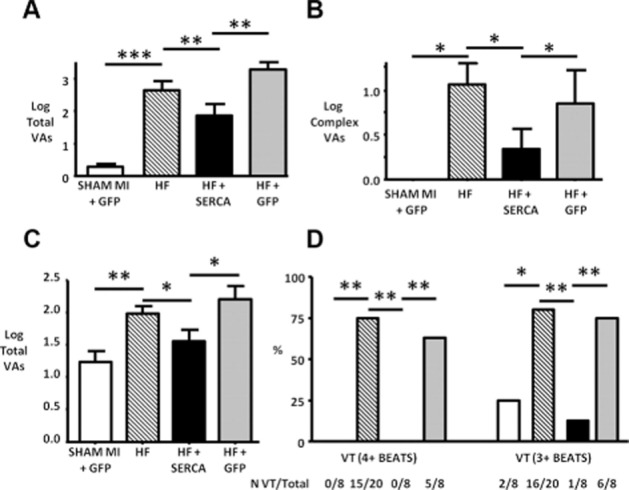Figure 4.

SERCA2a gene therapy rescues pro-arrhythmic phenotype of myocardial infarction (MI)-induced heart failure (HF) in the rat. (A) Simple spontaneous ventricular arrhythmias (VAs) [i.e. ventricular ectopic (VE) beat incidence] during a 24 h study period were significantly increased in HF versus sham animals and rescued in SERCA2a-treated animals. Control virus (HF + GFP) group showed no improvement over HF group. (B) Complex spontaneous VAs [i.e. multiple sequential VEs or ventricular tachycardia (VT)] showed a similar pattern. (C) Total isoprenaline-induced VAs during the 60 min recording period after injection were reduced by SERCA2a gene transfer. (D) The effect on isoprenaline-induced VT was even more marked with 15/20 HF animals suffering isoprenaline-induced VT (4 + beats), but none of the SERCA2a-treated HF animals. *P < 0.05, **P < 0.01, and ***P < 0.001. N VT/Total – number of rats that suffered VT versus total rats assessed with isoprenaline challenge. Reproduced with permission from Wolters Kluwer Health: Circulation Arrhythmia & Electrophysiology [Lyon et al. (2011)]. © 2011.
